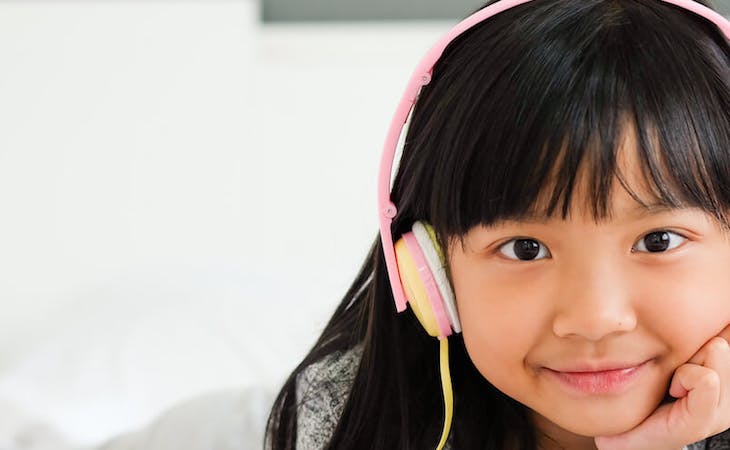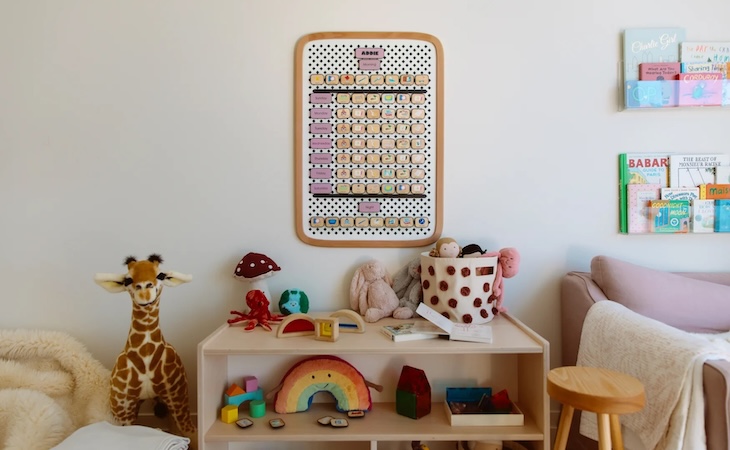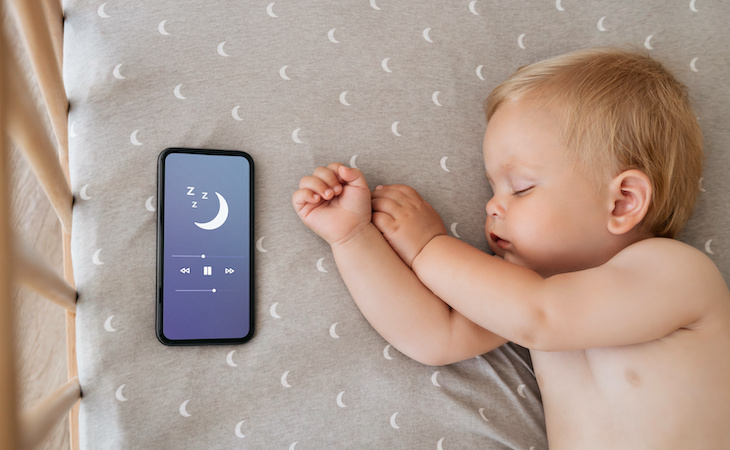There’s no doubt about the fact that the right music can help us clear our minds, wind down, and fall asleep at the end of the day.
Calming music has been shown to decrease production of the stress hormone cortisol and increase production of the pleasure hormone dopamine, according to Grammy-winning producer Barry Goldstein, who has long recommended that people incorporate soothing music into their nighttime routines. Lullabies, after all, have been part of bedtime routines for children across the globe for generations.
But when it comes to using music to help children sleep, it’s not as simple as queuing up a playlist and closing the door. How parents incorporate music into their children’s evening routines and what type of music makes all the difference.
The pros and cons of using music to help your kids sleep
Here’s where things get tricky: Though playing a certain song or singing your child to sleep may be a truly connective, beautiful experience, it can potentially have a negative impact on their sleep routine.
“Music can help a child feel calm and soothed, but if it is part of their regular bedtime routine, it can begin to ‘cue’ sleepiness for a child,” explains Lynelle Schneeberg, PsyD, fellow of the American Academy of Sleep Medicine and author of Become Your Child’s Sleep Coach.
Think of Pavlov’s dog; in time, music and sleep become “paired,” and your child becomes dependent on hearing that music to feel sleepy.
“If a parent leaves music on at bedtime to help a child fall asleep and then turns the music off later after the child is asleep, the child may need the music to be turned on again to get back to sleep if they wake up in the night,” Schneeberg says.
Basically, you land yourself with a child who can no longer fall asleep without music—which can be a serious problem if travel interrupts your routine or you want your child to grow more independent in their bedtime routine.
The right way to incorporate music into your child’s bedtime routine
That said, you can still incorporate music and/or singing into your child’s nighttime routine—you just have to go about it the right way.
“It’s OK to use music in the evening to signal that the household is moving into a quieter, sleepier time of night,” says Schneeberg. “Many parents begin dimming the lights and turning on soft, relaxing music at the beginning of the bedtime routine, while others sing a final song to their child just before they leave their bedroom.”
When used in this way, music can be a useful and soothing part of bedtime.
However, it’s best not to sing to or play music for your child in the moments that they’re actually falling asleep. According to Schneeberg, this is what conditions children to need singing or music in order to fall asleep.
“It’s best to leave a child’s room while they are still awake so that they learn how to make the transition from wake to sleep on their own,” she explains. This way, you can have your lullabies and protect your child’s independent ability to fall asleep too.
Related: A sleep coach’s 5-step plan for getting your kids to sleep
The best sleep music for kids
For a nighttime music routine to have the most soothing effect on your child, the type of music you play matters.
As with adults, music with a tempo between 60 and 80 beats per minute has a relaxing effect on kids, says Goldstein. “It slows your heart rate down, slows your breathing down, quiets your nervous system, and really helps the body calm down,” he explains.
The perfect piece of music also has a steady rhythm. Anything too complex has a stimulating effect on the body and mind, effectively waking you up instead of calming you down.
Also worth noting: “While music with lyrics often gets adults thinking about specific subjects, that’s not the case for babies and children,” says Goldstein. It makes sense, considering adults have decades of memories, thought patterns, and emotions that music lyrics can trigger. Children, though? Not the case.
“When a parent sings a lullaby, which has lyrics, to a child, it actually helps regulate their emotions,” Goldstein explains. “It creates a really strong bond between the parent and their child—and even triggers the production of oxytocin, which I like to call ‘the cuddle hormone.'”
If singing isn’t your thing (or your child has grown out of lullabies), though, there’s plenty of music out there specifically composed to support relaxation and help adults and kids alike settle down for sleep.
A few expert-approved pieces of music to add to your child’s evening playlist:
FAQs
Is it good for kids to sleep with music?
It’s not the best idea for your kid to sleep with music as it can make them dependent on it to fall or stay asleep. However, using music during their bedtime routine to wind down can help prepare them for sleepy time.
What kind of music helps kids sleep?
Music with a tempo between 60 and 80 beats per minute has a relaxing effect on kids, as well as songs that have a slower rhythm and lyrics, which helps regulate their emotions.
The right morning routine can set your child up for a successful day. Here’s how to put together a wake-up routine for kids.








